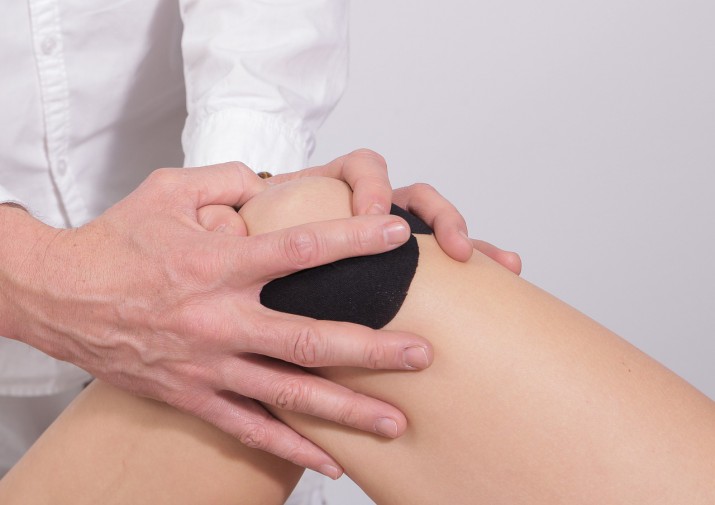It is common knowledge that muscles act in a synergistic and antagonistic manner, it is also important to realize that our joints also act in a similar manner.
Joints – allow (& help control) movement

Muscles – create movement
The function of joints are very important to how we approach training and programming for our clients. Each joint or series of joints in our bodies has a specific function, and therefore is prone to a predictable level or type of dysfunction. Therefore each joint requires a specific training need.
If we look at our body in a holistic manner, it is easy to see how these act to function together to allow us to produce movement and performance. The following list describes the general function/role of our key joints, later we will touch on training needs and dysfunctions.
Joints – General function:
- Ankle – mobility (multiplanar)
- Knee – stability (flexion/extension)
- Hip – mobility (multiplanar)
- Lumbar spine – stability
- Thoracic spine – mobility
- Cervical spine – mobility/stability
- Glenohumeral – mobility
- Elbow – stability (flexion/extension)
- Wrist – mobility (multiplanar)
As you can see, at first glance, our joints alternate between mobility and stability. This is not by happenstance, our joints work as a chain to allow for functional movement. For example, the ankle requires a certain level of mobility through 3 planes of movement (plantar and dorsiflexion and pronation) to allow for proper walking and running gait.
Moving up the chain, the knee requires a certain level of stability to allow for proper flexion and extension during running.
Continuing to move up the chain, we continue this alternating of basic function as the body acts synergistically.
As an instructor, it is important to understand this kinetic chain when it comes to assessment, and subsequently exercise programming. Understanding that our body acts as chain, it is easy to understand why we program in push/pull, squat/lunge, rotation, and core functional movement patterns. If we lose function in one joint, the next joint up the chain has to compensate in a movement pattern it is ill equipped to handle. This conversely is how we end up with dysfunction and ultimately pathomechanic, pain and injury.
Let’s look at two commonly reported pain/injury types reported by clients; anterior knee and lower back (LBP) and how dysfunction in the kinetic chain may play a role in leading to these issues.
Anterior Knee Pain
Anterior knee pain can be described as pain in the front of the knee, below or typically deep underneath the patella. Without a medical diagnosis we can begin to formulate, through a proper biomechanical assessment that this pain arises from a multitude of possible dysfunction in the kinetic chain. Earlier, we concluded that dysfunction and tightness at the ankle can lead to compensation during the running and walking gait. Simply put, if we have a lack of mobility in the ankle, be it inadequate dorsiflexion due to tight calfs or overpronation due to flat feet, we see that the quadriceps group becomes over active. This can lead to medial rotation of the knee (to compensate for overpronation or lack of dorsiflexion at the ankle) to allow for proper toe off during the gait pattern. This compensation occurs more often and more quickly, often and with exponential force during running, jogging, and jumping.
LBP
Lower back pain can be described as pain or discomfort through the lumbo-pelvic complex. This can be in the form of chronic pain during prolonged periods of sitting or standing, sciatica, or while carrying an external load, such as during a squat. Now this pain is simply a symptom of a greater dysfunction in the chain. For example, loss of mobility immediately below or higher up the chain. In this instance, loss of mobility at the hip (tight hip flexors, inactive or weak glutes, and anterior pelvic tilt) and the thoracic spine (tight and limited range of motion). As a complex, the lumbar spine is primarily a stabilizer, not meant to take on the task of mobility in the chain. We typically see this manifestation of compensation take place during the squat (tucked tailbone/posterior pelvic tilt) and rotational (improper opening or closing of the hip) movement patterns.
Looking at the body on a joint by joint basis, we can see that the inability of a joint to properly function causes a transfer of forces up or down the chain. For instance, there is a correlation between ankle immobility and knee pain (patellofemoral pain syndrome).
In conclusion, each joint has either a “mobility” or “stability” role it was designed to play and when there is a disruption (tightness, weakness, etc) there is a resulting compensation in the joint above or below the chain. Compensation unfortunately can lead to dysfunction and eventually injury, be it chronic or acute.
Examples:
- loss of ankle mobility elicits knee pain
- loss of hip mobility elicits LBP and/or knee pain
- loss of thoracic mobility elicits neck and shoulder pain and/or LBP



